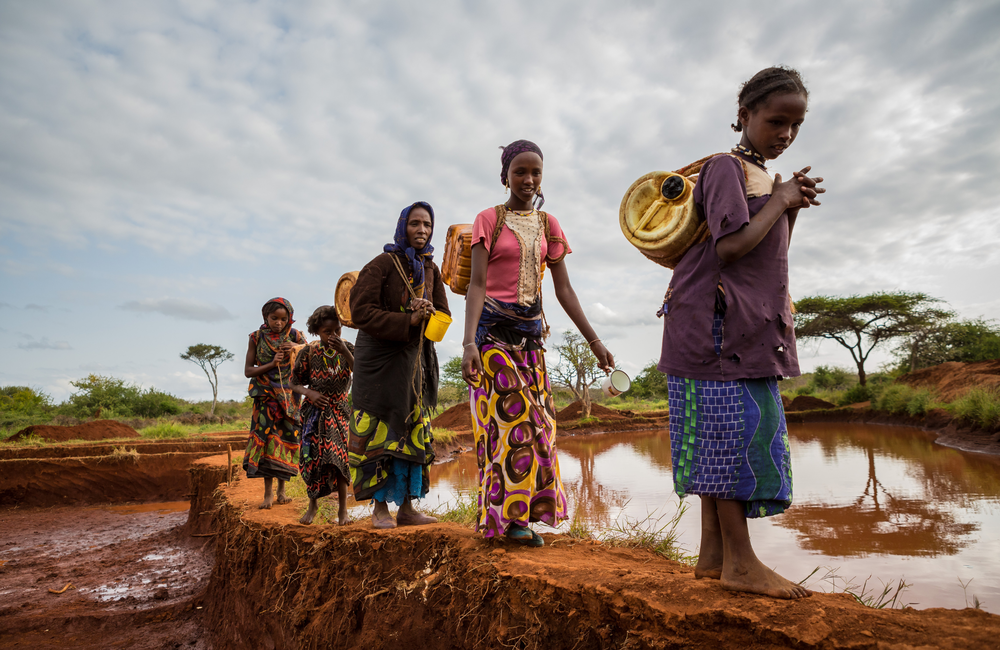
UNAIDS’ HIV prevention guidelines rely on reductive gender stereotypes placing a burden on girls and women, according to Dr Catherine Merriman of Queen Mary University London and Dr Kevin Deane of the Open University. The researchers found an overwhelming absence of targeted and precise guidelines for engaging boys and men, while girls and women were categorised as victims.
Across sub-Saharan Africa, adolescent girls and young women are disproportionately affected by HIV. While it is important to acknowledge the biological, social, cultural and economic factors that contribute to this, simplistic cultural and social framing will impede HIV prevention progress and feed into the infantilisation and degradation of African people.
However, a 'single story' that portrays African women as helpless and disempowered and African men as virile and domineering persists, despite the research and on-the-ground knowledge showing women's leadership and wide variations in representations of femininity and masculinity across the 34 sub-Saharan nations.
The United Nations Programme on HIV and AIDS (UNAIDS) is the leading voice in coordinating global action on HIV and AIDS. Its influence spans globally to regional and national levels, influencing local policy and service delivery.
The researchers wanted to understand how girls, boys, women and men are portrayed in UNAIDS’ HIV-prevention guidelines. They reviewed UNAIDS’ guidelines published before 2019, in English and focused on sub-Saharan Africa. They searched publications identified on the UNAIDS website as relating to ‘women and girls’ or ‘men and boys’.
The authors looked at how girls, boys, women and men were referred to in the guidance. They also checked whether social interventions (such as addressing masculinity, empowering women or tackling gender inequalities) or biomedical interventions (such as increased testing, PrEP, condoms, voluntary male circumcision or antiretroviral therapy) were recommended.
Women and girls are burdened two-fold
UNAIDS HIV prevention guidance perpetuates gender stereotypes by depicting women and girls in sub-Saharan Africa as vulnerable and disempowered, despite years of advocacy led by women. Moreover, the vast majority of guidelines focus on women and girls and those focused on men and boys are limited, suggesting the role of men in reducing HIV transmission is overlooked. The authors say that this creates a double burden for women and girls, who bear the brunt of the epidemic and are also the key site for intervention.
Of the 34 publications included in the study:
- Ten (29%) focused on women exclusively
- Twenty (59%) focused on women, with a secondary focus on men
- Two focused on men, with women as a secondary focus
- None focused on men exclusively
The guidelines portrayed an idea of demure, disempowered women at risk of hypermasculine hypersexual domineering men:
“Culturally accepted notions of men as the sole decision-makers in the household contribute to a male-centred environment of domination and control when it comes to the fulfilment of sexual and reproductive choices and desires” (UNAIDS, 2011).
“The same value systems and norms of masculinity that discourage men and boys from accessing health services have been shown to be powerful barriers to HIV services in a diversity of settings… Several studies conducted in eastern and southern Africa suggest that notions of masculinity increase the risk of HIV infection and also inhibit men from getting tested for HIV” (UNAIDS, 2016).
“In the real world, women face a range of HIV-related risk factors that the majority of men do not. Gender inequality and poverty trap millions of women in economic dependence on male partners, and expose them to violence and sexual aggression – all of which compromise their ability to shield themselves from HIV” (UNAIDS, 2006).
“Due to gender norms and inequalities, many women and girls lack the social and economic power to control key aspects of their lives, particularly sexual matters” (UNAIDS, 2006).
Biomedical or social interventions?
In documents focused on women, both biomedical interventions (such as PrEP, testing and treatment) and social interventions (such as female empowerment) were considered priorities in HIV prevention. The report considered more holistic approaches to HIV prevention, however, the practical advice on achieving female empowerment was limited. Although the guidelines emphasised the role of female empowerment and gender equality there was little guidance on how to achieve them.
In contrast, in documents focused on men, prevention recommendations focus mainly on biomedical interventions (such as PrEP, condoms, voluntary male circumcision and increased testing). There was little emphasis placed on men’s role in addressing masculinity and power dynamics, or their role in female empowerment.
The lack of social interventions targeting boys and men suggested that men were beyond reform and presented a fixed singular idea of masculinity across Africa. It also raises questions about whether biomedical interventions for heterosexual men and boys are prioritised for the sake of their own health – or in order to reduce infections among women and girls.
There was a further lack of inclusivity as the guidelines focused on cisgender heterosexual individuals. However, the authors conducted the review in 2019, so the focus and tone of more recent publications may be different.
UNAIDS’ plays a key role in the international HIV response; the authors highlight the importance of international guidelines acknowledging and responding to the gender diversity across African nations. UNAIDS’ views on gender “deflects attention from men and characterises the prevention paradigm as one where women bear the burden of having to protect themselves from the predatory behaviours of men,” they say. “UNAIDS [is] overlooking its commitment towards gender equality and empowering women.”
The authors call for UNAIDS to avoid simplistic gender stereotyping; provide specific guidance on ways to engage boys and men in social interventions; and have meaningful inclusion of women and girls when shaping future publications.
Merriman C & Deane K. Evaluating HIV policy: a gender analysis of the representation of women and men in UNAIDS HIV-prevention guidelines. African Journal of AIDS Research, 22(1): 9-17, 2023.
DOI: 10.2989/16085906.2022.2154232
